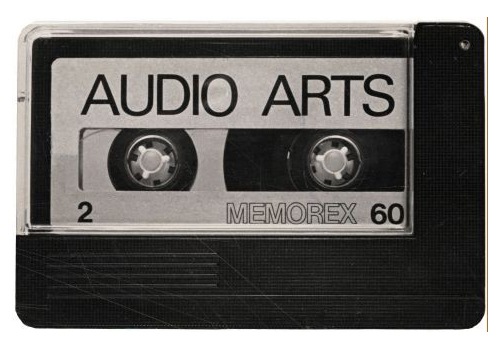Audio Arts (1973-2006)
Filed under magazine, sound recording | Tags: · art, art history, interview, sound art

“The audio cassette-magazine Audio Arts was established by Bill Furlong in 1973. Edited and produced by Furlong, it comprises an integral element of his art practice.
The idea of Audio Arts arose out of conversations between two young artists, William Furlong and Barry Barker, in the early 1970s. Its publication was a part of the conceptual experimentation taking place within the contemporary art of the time.
Since its inception in 1972, Audio Arts has grown to become a comprehensive and coherently focused sound archive of artists’ voices as well as sound art. The cassette-magazine has been in continuous and regular publication for thirty-five years, with over twenty-five volumes of four issues each.
A small part of the Audio Arts archive is shown for the first time. Four hours of recorded clips can be accessed online, or in Tate gallery via headphones.”
Exhibition (Tate, 2007)
Article about Furlong (Randy Kennedy)
Speaking of Art book (contains 50 selected interviews)
Wikipedia
Listen (on Tate website)
Comment (0)Manuel Castells: Communication Power (2009)
Filed under book | Tags: · business, communication, global warming, internet, mass media, network society, neuroscience, politics, technology, youtube

We live in the midst of a revolution in communication technologies that affects the way in which people feel, think, and behave. The mass media (including web-based media), Manuel Castells argues, has become the space where political and business power strategies are played out; power now lies in the hands of those who understand or control communication.
Over the last thirty years, Castells has emerged as one of the world’s leading communications theorists. In this, his most far-reaching book for a decade, he explores the nature of power itself, in the new communications environment. His vision encompasses business, media, neuroscience, technology, and, above all, politics. His case histories include global media deregulation, the misinformation that surrounded the invasion of Iraq, environmental movements, the role of the internet in the Obama presidential campaign, and media control in Russia and China. In the new network society of instant messaging, social networking, and blogging–“mass self-communication”–politics is fundamentally media politics. This fact is behind a worldwide crisis of political legitimacy that challenges the meaning of democracy in much of the world.
Publisher Oxford University Press, 2009
ISBN 0199567042, 9780199567041
Length 571 pages
Jonathan Crary: Suspensions of Perception: Attention, Spectacle, and Modern Culture (1999)
Filed under book | Tags: · 1880s, 1890s, 1900s, aesthetics, art history, attention, painting, perception, spectacle, subjectivity, visual culture

“Suspensions of Perception is a major historical study of human attention and its volatile role in modern Western culture. It argues that the ways in which we intently look at or listen to anything result from crucial changes in the nature of perception that can be traced back to the second half of the nineteenth century.
Focusing on the period from about 1880 to 1905, Jonathan Crary examines the connections between the modernization of subjectivity and the dramatic expansion and industrialization of visual/auditory culture. At the core of his project is the paradoxical nature of modern attention, which was both a fundamental condition of individual freedom, creativity, and experience and a central element in the efficient functioning of economic and disciplinary institutions as well as the emerging spaces of mass consumption and spectacle.
Crary approaches these issues through multiple analyses of single works by three key modernist painters—Manet, Seurat, and Cezanne—who each engaged in a singular confrontation with the disruptions, vacancies, and rifts within a perceptual field. Each in his own way discovered that sustained attentiveness, rather than fixing or securing the world, led to perceptual disintegration and loss of presence, and each used this discovery as the basis for a reinvention of representational practices.
Suspensions of Perception decisively relocates the problem of aesthetic contemplation within a broader collective encounter with the unstable nature of perception—in psychology, philosophy, neurology, early cinema, and photography. In doing so, it provides a historical framework for understanding the current social crisis of attention amid the accelerating metamorphoses of our contemporary technological culture.”
Publisher MIT Press, 1999
October Books series
ISBN 0262531992, 9780262531993
397 pages
Reviews: Juliet Koss (CAA Reviews, 2000), Jodi Brooks (Screening the Past, 2000), Steven Z. Levine (Bryn Mawr College, 2001), Kimberly Lamm (Cultural Critique, 2002).
PDF (updated on 2024-3-3)
Comment (0)
